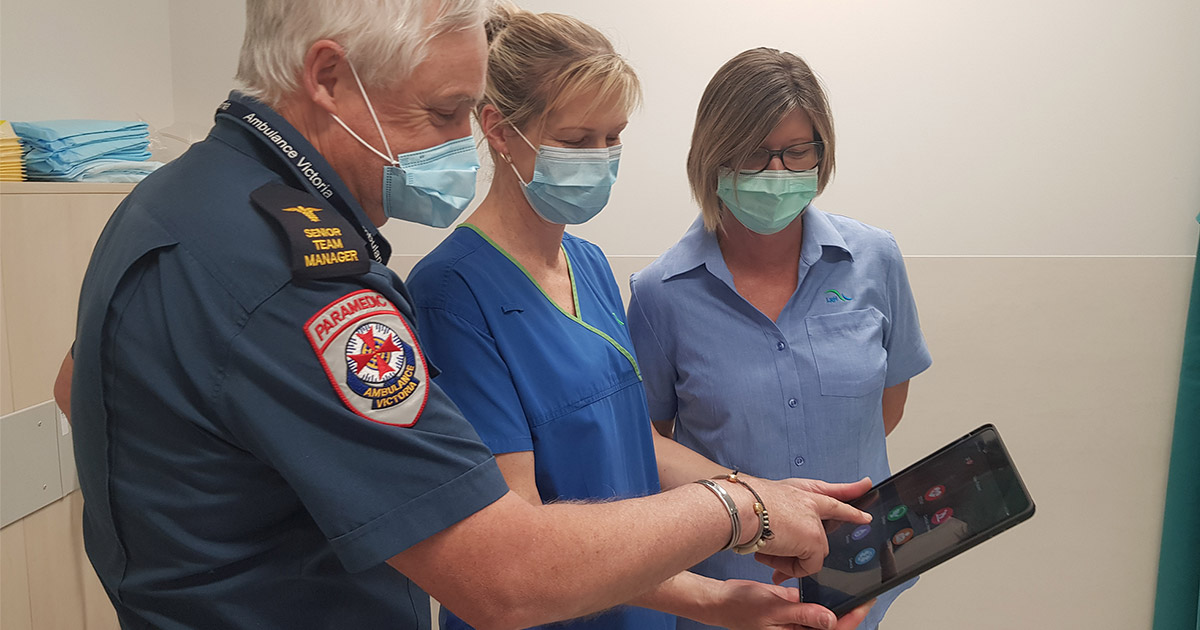Pulsara Around the World - 2025 Recap and January 2026
December Recap After an incredibly busy events year with 102 conferences, trade shows, and sponsorships, December was on the slower side for us, with...
1 min read
 Team Pulsara
:
Sep 28, 2020
Team Pulsara
:
Sep 28, 2020

For Latrobe Regional Hospital (LRH) near Melbourne, Australia, streamlining communication has been a major area of focus, both to improve patient care and to strengthen collaboration across its healthcare system. Up until the beginning of 2020, they used a combination of phone calls and pagers to interface among Emergency Services, ED, and hospital staff—resulting in inefficiencies and challenging communication for caregivers.
“I think the willingness of the ambulance to actually ring prior to Pulsara was a big thing,” said Carolyn Beltrame, an Emergency Nurse at LRH. “They knew that a lot of the time, the phone would be busy, or difficult for us to answer.”

But even when the ambulance did connect with hospital teams, communication was often faulty. “Due to spotty reception, we could miss a patient’s name or not get their date of birth right,” said Mark Scammell, Operations Community Engagement Liaison Coordinator at Ambulance Victoria. “Upon patient arrival, [we were] scrambling for the right details and pulling their old notes.”
Latrobe wanted a technology solution that could scale to meet patient needs and centralize communication for all of its departments, staff, and partners.
Latrobe is the third hospital in the state of Victoria to implement a mobile communication platform called Pulsara. Made possible by grant funding, the hospital activated the technology across multiple entities in February 2020, including ambulance partners, cardiology, stroke, and mental health teams.
Pulsara connects people when seconds matter with a secure, unified patient channel—replacing multiple phone calls, radio reports, faxes, and pagers—and allowing care teams to communicate efficiently and effectively when treating patients.
Read the case study to learn how Latrobe Regional Hospital united their EMS and hospital teams on one communication channel, improving door-to-CT times by 68% — reducing them from an already impressive 22 minutes down to an average of just 7 minutes.
To learn more about how hospitals and EMS organizations are using Pulsara to improve communication, reduce treatment times, and mitigate the spread of COVID-19, check out our client success stories.

December Recap After an incredibly busy events year with 102 conferences, trade shows, and sponsorships, December was on the slower side for us, with...

Editor's Note: In July 2025, EMS1 and Fitch & Associates released their annual EMS trend survey, What Paramedics Want, proudly sponsored by Pulsara....
![[PRESS RELEASE] Published Research Finds Up to 31% Faster STEMI Treatment Times in Rural Hospital Setting with Pulsara](https://www.pulsara.com/hubfs/_1_website-page-blog-assets/pulsara-hosp-teams-assign-cardio-stemi-rn-1200x701.jpg)
Published research shows how using Pulsara, alongside standardized field activation and a focus on stakeholder relationships, improves STEMI care and...